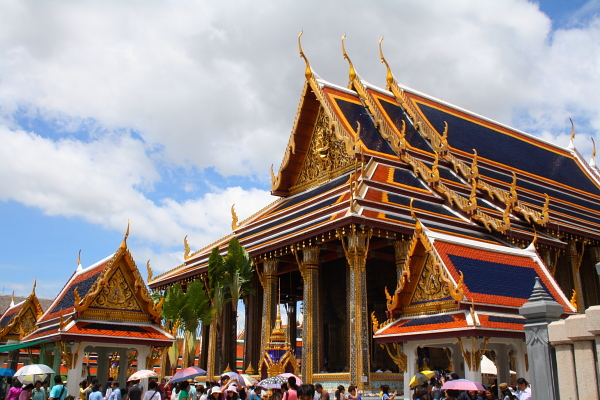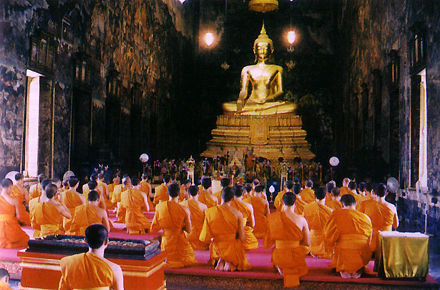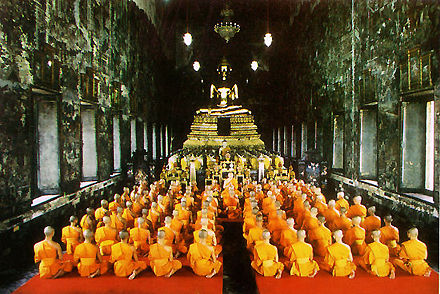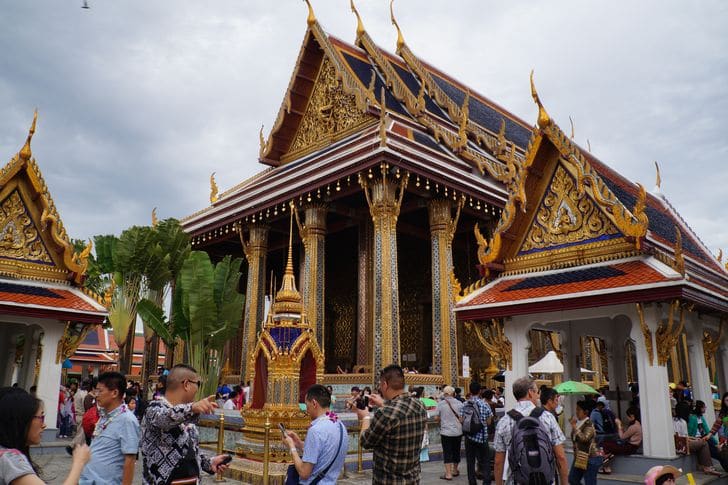Phra ubosot
The ubosot ( Thai: โบสถ์, Phra ubosot พระ อุโบสถ, also briefly Bot) is the most sacred building in a Wat, a Buddhist temple in Thailand. The term comes from the word uphosathagara from the Pali language, mostly it is shortened to " bot". Here the monks from their important ceremonies, such as the monk ordination or even the regular commitment of all monks of the Order 227 rules. This latter ceremony is conducted twice a month, ie on the 15th day of the waning and on the 15th day of the waxing moon (see Thai lunar calendar). It is used in Thailand suat patimok ( สวด ปา ฏิ โมกข์ ), so Patimokkha (see Vinayapitaka ) called laity are not admitted.
Although this building is the most important of the temple, it is not necessarily the largest. The minimum size is only required that at least 21 monks therein, must find place. The only difference to other buildings within the temple complex are the eight marker stones that are called Bai Sema. They are the four cardinal points at the four corners and ( in between each on the half). Only within the municipal area marked out as the sacred ceremonies of the monks can be held.
The bot usually has a rectangular shape with a long central and two side aisles. He may also have a front and rear covered porch. The outer walls are made of either wood or brick and whitewashed. A bot can have one, two or even three doors on the east and the west wall. Here, the Buddha statue in the main entrance is opposite usually. If permitted by the terrain, the bot is oriented eastward, the direction in which the Buddha looked when he attained enlightenment.
Pilasters support the multi- tiered roof at the sides, while the main weight is supported by pillars that taper ever so slightly upward. Many Bot in Northern Thailand still have columns of the trunks straight -grown teak trees. The Season roof is covered with glazed ceramic tiles. In the Rattanakosin style orange - red tiles forming a rectangle that is framed by green tiles. This type of roofing dates back to the Sukhothai period (13th - 15th century AD). The former close ties with the Chinese court resulted with the introduction of some Chinese characteristics, such as the roof - " bricks " made of ceramic. In the side walls are at uniform intervals windows and their frames and shutters are often decorated with ornate carvings or colorful mosaics.
The walls inside the bot can easily white -washed but also be provided with magnificent murals. Unlike many Chinese temples, the interiors of Thai temple buildings are closed at the top with a blanket that hide the beams of the roof before the eye of the beholder. The ceiling is often artistically painted, with gold motifs on a red ground.










